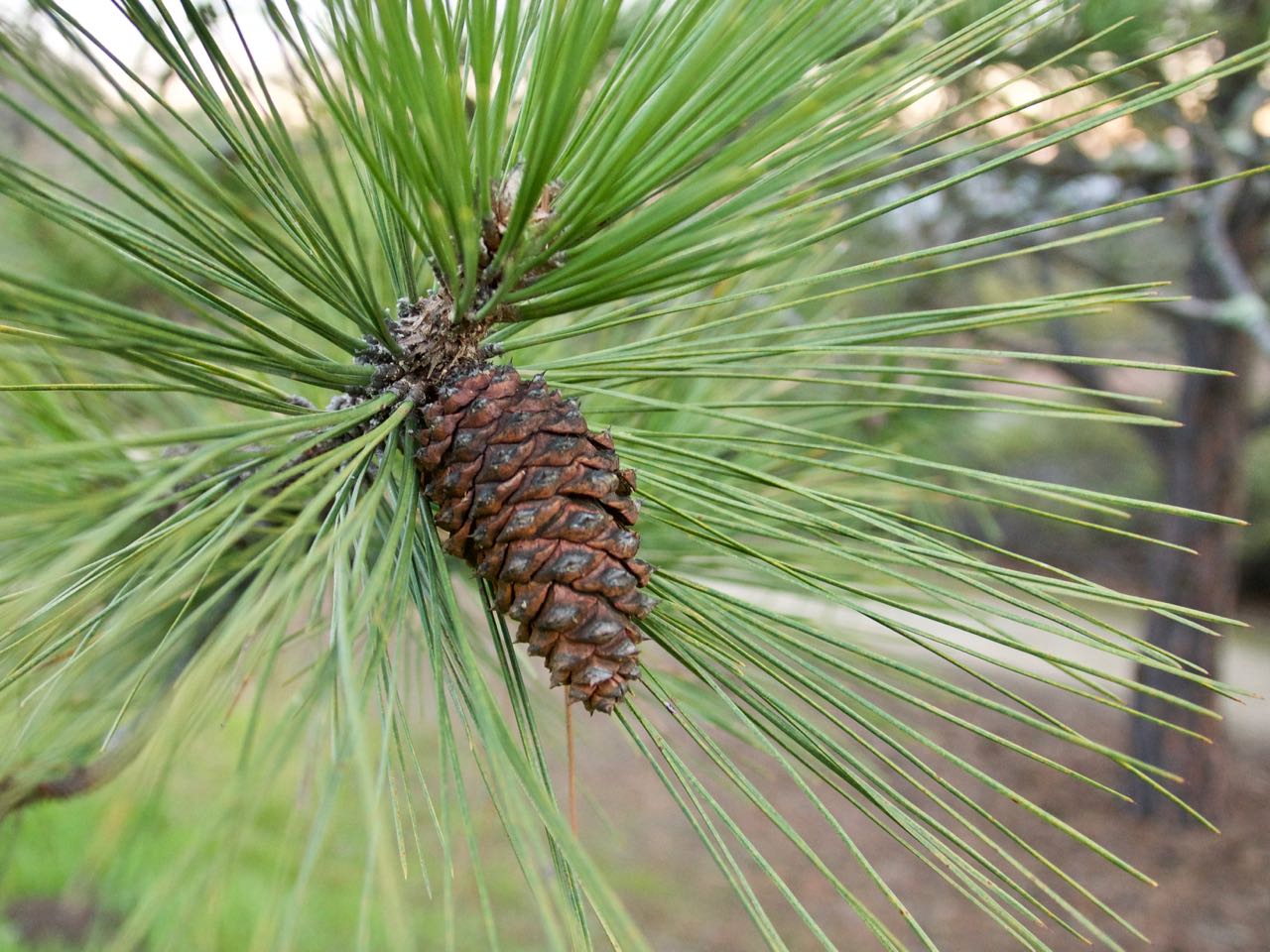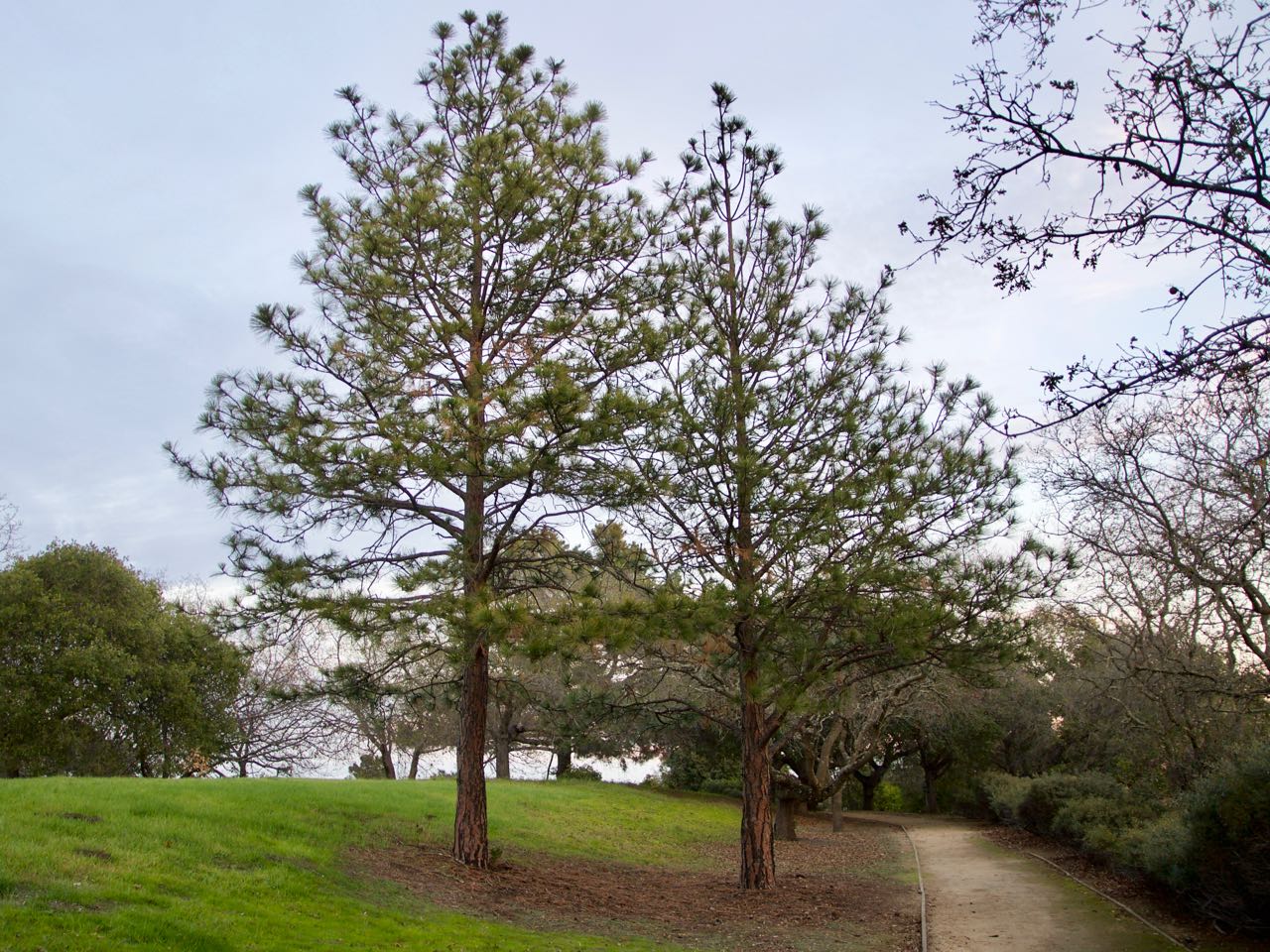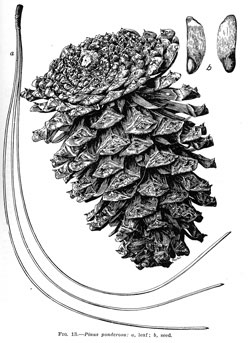Pinus ponderosa
 ponderosa pine
ponderosa pine

Widely distributed through the Rocky Mountains into Canada, in the Cascades, and in the mountains of California, Utah, Arizona, and New Mexico, ponderosa pine stands in the United States outnumber those of any other tree, except Douglas fir. Its range includes parts of the Santa Cruz Mountains a few miles south of Stanford. The 6-inch dark green needles are three to a cluster and the prickly cones are about 5 inches long. The tree closely resembles Jeffrey pine.
Pacific ponderosas (P. ponderosa subsp. benthamiana) and sugar pines (P. lambertiana) share the list of tallest pines in the world quite evenly. Each has pushed the other off the pedestal for champion over the decades. In 2017, the grand prize for tallest pine went to a Pacific ponderosa in the Sierras which towered to over 274 feet.
A pair of younger specimens are in Lathrop Park, well uphill from 809 Lathrop Drive (location). A handsome specimen on the right at 947 Mears Court may be ponderosa pine (or it may be a Jeffrey – securing a mature, open cone would help). The area’s largest is at 2100 Amherst Street in Palo Alto, on the left of the driveway. Its unusual tear-drop-shaped crown is reminiscent of a wide Italian cypress. An old specimen with a 4-foot girth had been reported in the Arboretum in the northwest corner where Campus Drive crosses Palm Drive (near map pin).
· A simple key to campus pines
Name derivation: Pinus – Latin for pine; ponderosa – heavy (the wood).
About this Entry: The main text of this entry is from the book Trees of Stanford and Environs, by Ronald Bracewell, published 2005. Tallest pine note updated Oct 2017 (SP). Old specimen in Arboretum noted as missing; all locations up to date (Jun 2019, SP). Possible Mears specimen added; edits (Jan 2024, SP). Amherst location added (Mar 2024, SP).






